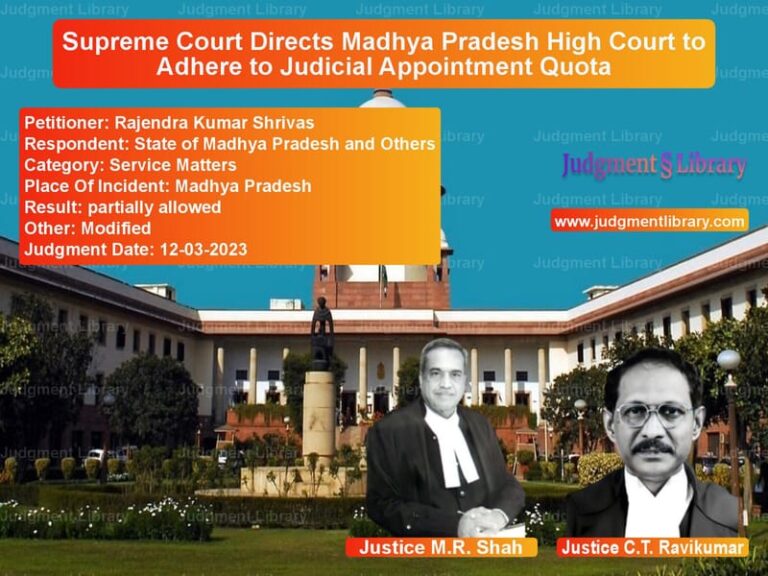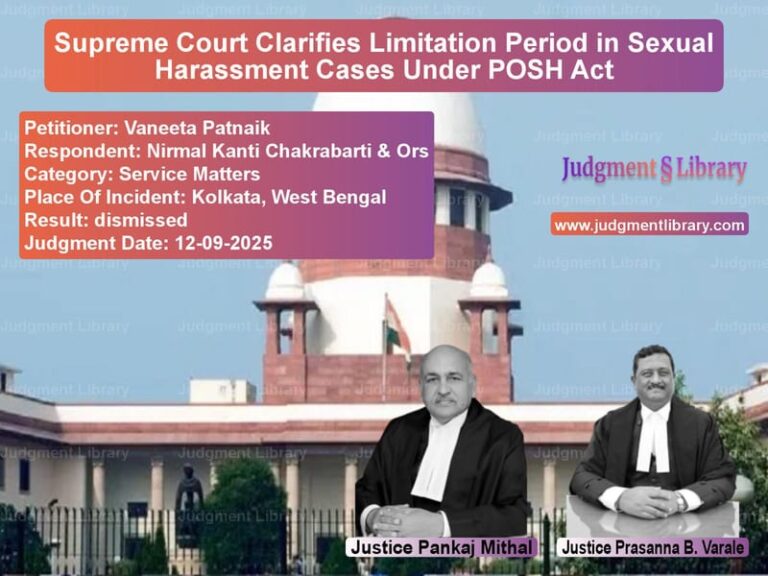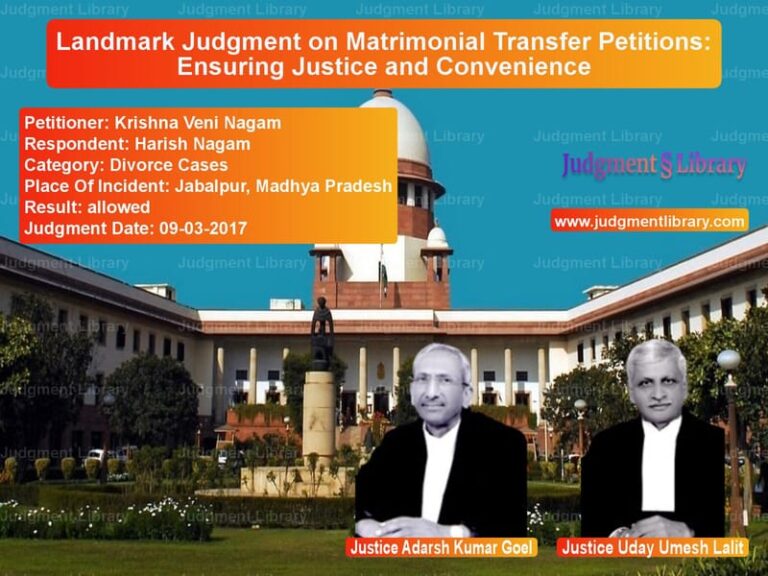Retirement Age and Re-employment: Supreme Court Clarifies University Statutes
The case of Navin Chandra Dhoundiyal vs. State of Uttarakhand & Ors. revolved around the correct interpretation of university statutes regarding the retirement and re-employment of teachers in Kumaun University. The dispute arose when the university issued an office order on 21.12.2019 stating that professors would retire on the last date of the month in which they turned 65. The appellants contended that as per Statute No. 16.24 of the University, they were entitled to continue until June 30 of the following academic session.
Background of the Case
The appellants were professors in Kumaun University who had reached the age of superannuation (65 years). They argued that according to university rules, they should be allowed to continue until June 30 following their retirement date. The university, however, issued an office order setting their retirement dates as the last day of the month in which they turned 65.
Relevant Statute: 16.24
The key provision in this case was Statute No. 16.24, which states:
“The age of superannuation of a teacher of the University shall be sixty-five years. No extension in service beyond the age of superannuation shall be granted to any teacher. Provided that a teacher whose date of superannuation does not fall on June 30, shall continue in service till the end of the academic session, that is, June 30, following and will be treated as on re-employment from the date immediately following his superannuation till June 30, following.”
Arguments Presented
Petitioners’ (Professors) Arguments
- Statute 16.24 provides that professors who retire before June 30 should continue until the end of the academic session.
- Previous rulings, including Indu Singh v. State of Uttarakhand, supported this interpretation.
- The purpose of the statute was to ensure continuity in teaching and avoid disruption for students.
- The High Court wrongly restricted the provision to mean only an extension till the end of the retirement month.
Respondents’ (State and University) Arguments
- The rule only ensures that retirements happen at the end of the month, not an extension until June 30.
- Allowing all retiring professors to continue until June 30 would disrupt university administration.
- The High Court correctly found that the rule does not entitle teachers to an automatic extension.
- The government order ensured consistency in retirement dates.
Supreme Court’s Analysis and Judgment
1. Legislative Intent of Statute 16.24
The Supreme Court examined the intent behind the statute and found that it was designed to prevent mid-session disruptions. It stated:
“The very object and intent of the proviso to Statute No. 16.24 is to avoid the disruption caused by discontinuity of service of a teaching staff employee or official mid-session.”
2. Interpretation of the Term “June 30 Following”
The Court ruled that the phrase “June 30 following” was crucial and meant that teachers were to be re-employed until the end of the next academic session. The judgment noted:
“If the state or the university wished to depart from the prevailing understanding, appropriate measures could have been taken through amendments.”
3. Importance of Judicial Precedent
The Court found that the High Court had wrongly disregarded the ruling in Indu Singh, which had correctly interpreted the provision. The Supreme Court emphasized that conflicting judgments create uncertainty:
“Established status quo brought about by judgments interpreting local or state laws should not be lightly disturbed.”
4. Impact on University Administration
The Supreme Court dismissed concerns about administrative disruption, stating that any changes should be made through formal amendments rather than conflicting interpretations.
Final Verdict
The Supreme Court set aside the High Court’s ruling and held that the appellants were entitled to continue in service until June 30 of the following academic session. It directed the university to reinstate any professor who had been forced to retire early and pay full salaries for the period they were out of employment.
Key Takeaways
- Teachers retiring before June 30 are entitled to continue in service until the end of the academic session.
- The Supreme Court upheld continuity in education over administrative convenience.
- Government and university policies must align with clear statutory provisions.
- Judicial precedents should be respected to avoid inconsistent rulings.
This ruling provides clarity on employment and re-employment rights in educational institutions, ensuring stability for teachers and students alike.
Petitioner Name: Navin Chandra Dhoundiyal.Respondent Name: State of Uttarakhand & Ors..Judgment By: Justice Uday Umesh Lalit, Justice S. Ravindra Bhat.Place Of Incident: Uttarakhand.Judgment Date: 16-10-2020.
Don’t miss out on the full details! Download the complete judgment in PDF format below and gain valuable insights instantly!
Download Judgment: Navin Chandra Dhound vs State of Uttarakhand Supreme Court of India Judgment Dated 16-10-2020.pdf
Direct Downlaod Judgment: Direct downlaod this Judgment
See all petitions in Pension and Gratuity
See all petitions in Employment Disputes
See all petitions in Judgment by Uday Umesh Lalit
See all petitions in Judgment by S Ravindra Bhat
See all petitions in allowed
See all petitions in supreme court of India judgments October 2020
See all petitions in 2020 judgments
See all posts in Service Matters Category
See all allowed petitions in Service Matters Category
See all Dismissed petitions in Service Matters Category
See all partially allowed petitions in Service Matters Category







